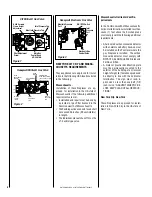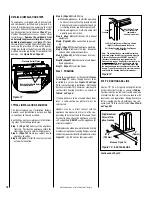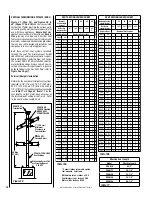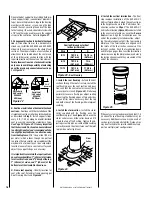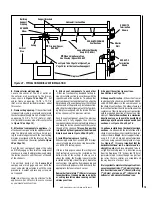
5
NOTE: DIAGRAMS & ILLUSTRATIONS NOT TO SCALE.
COLD CLIMATE INSULATION
For cold climate installations, seal all cracks
around the appliance with noncombustible
material and wherever cold air could enter
the room. It is especially important to insulate
outside chase cavity between studs and under
floor on which the appliance rests, if floor is
above ground level.
Gas line holes and other openings should be
caulked or stuffed with unfaced fiberglass
insulation. If the fireplace is being installed
on a cement slab, in cold climates, a sheet of
plywood or other raised platform can be placed
underneath to prevent conducting cold up into
the room. It also helps to sheetrock inside
surfaces and tape for maximum air tightness
and caulk firestops.
LOCATION
In selecting the location, the aesthetic and
functional use of the appliance are primary
concerns. However, vent system routing to
the exterior and access to the fuel supply
are also important. Consideration should be
given to traffic ways, furniture, draperies, etc.,
due to elevated surface temperatures (
see
Figure 4
). The location should also be free
of electrical, plumbing or other heating/air
conditioning ducting.
These direct vent appliances are uniquely
suited for installations requiring a utility shelf
positioned directly above the fireplace. Utility
shelves like these are commonly used for locat-
ing television sets and decorative plants.
Be
aware that this is a heat producing appliance.
Objects placed above the unit are exposed to
elevated temperatures.
To provide for the lowest possible shelf surface
use the alternate rear vent outlet with attached
venting routed in a way to minimize obstructions
to the use of the space above the appliance.
Do
not insulate the space between the appliance
and the area above it. See
Figure 9
.
The mini-
mum height from the base of the appliance to
the underside of combustible materials used to
construct a utility shelf in this fashion is shown
in the Table in
Figure 9
.
The appliance should be mounted on a fully
supported base extending the full width and
depth of the unit. The appliance may be located
on or near conventional construction materials.
However, if installed on combustible materials,
such as carpeting, vinyl tile, etc., a metal or
wood barrier covering the entire bottom surface
must be used.




